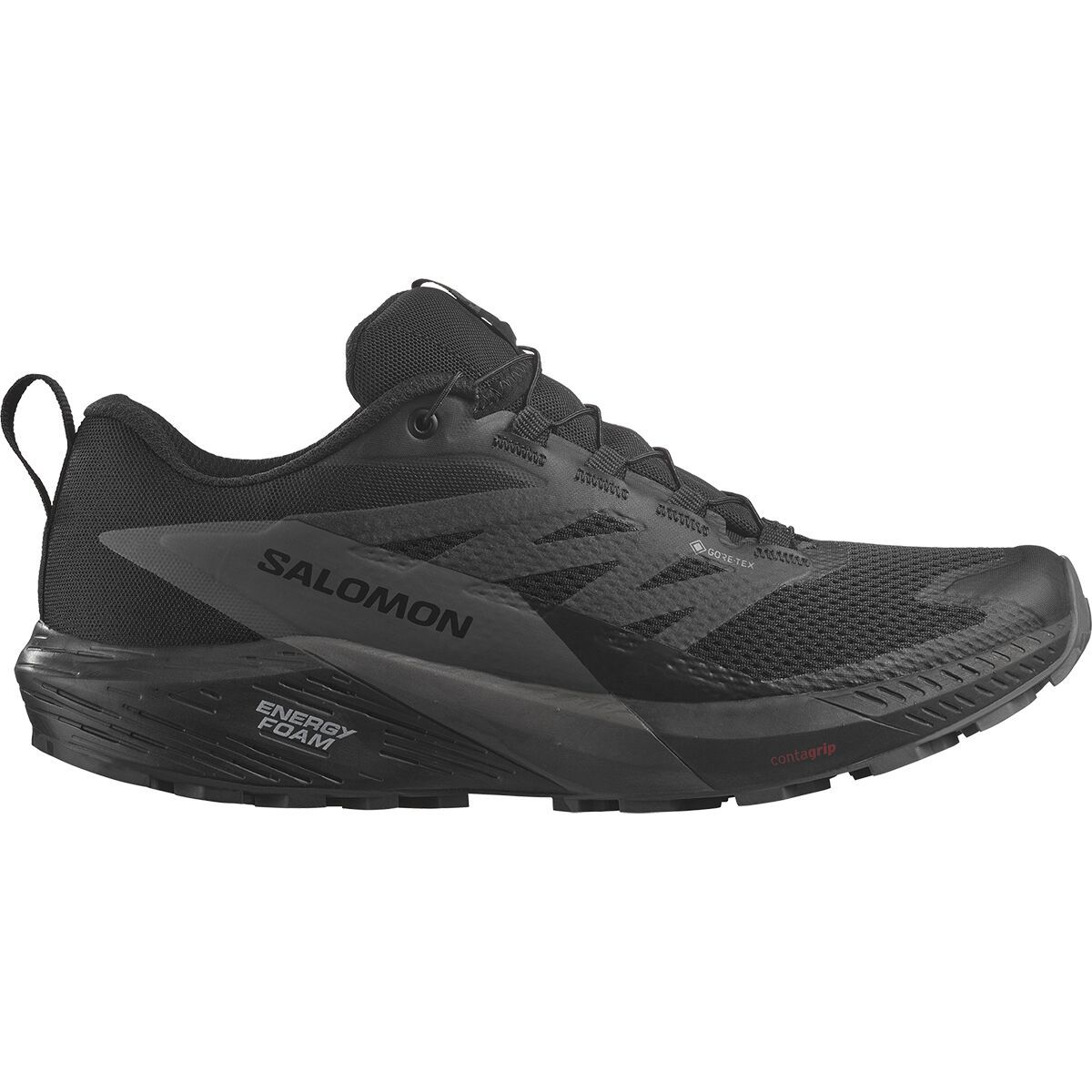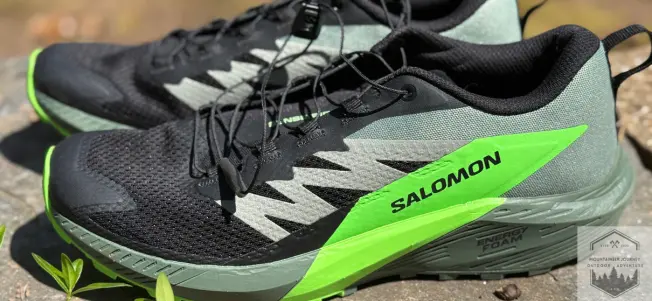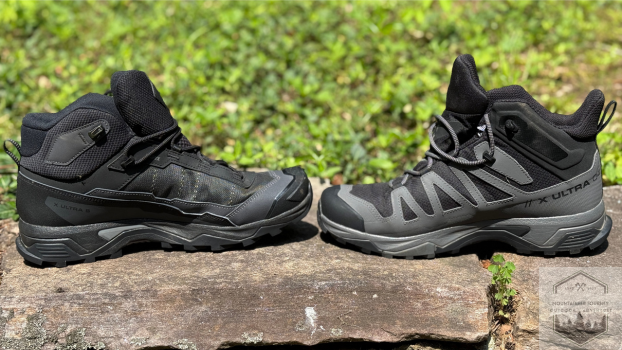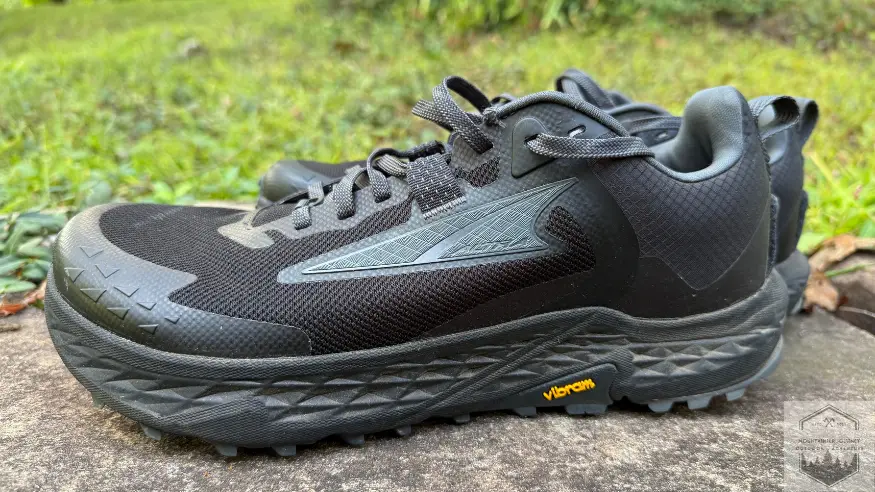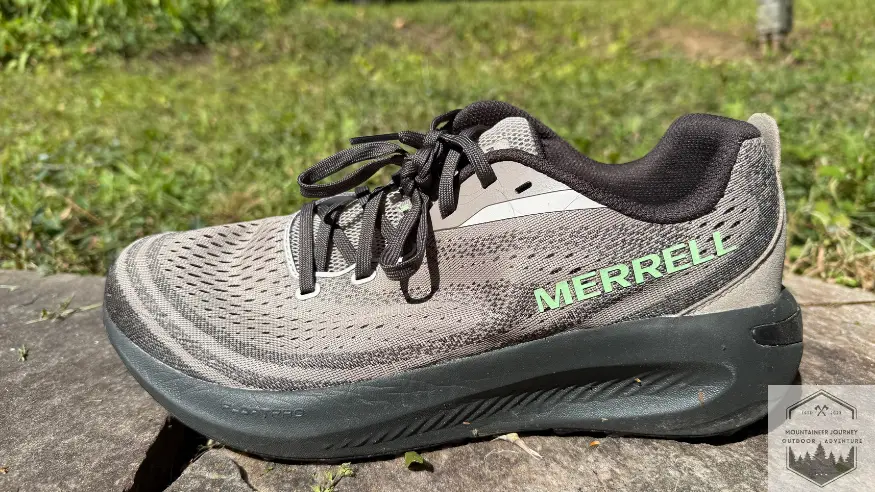Brooks Cascadia 18 Review | Testing Results After 200+ Miles (2025)
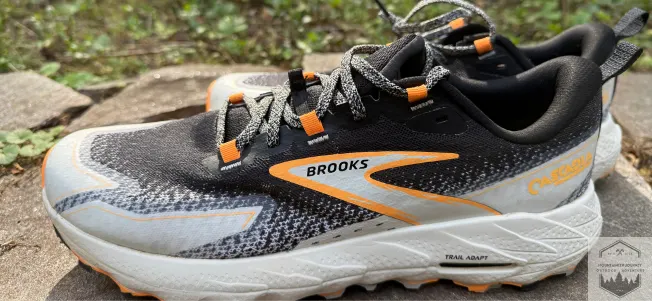
In this article, I’m going to share my HONEST Brooks Cascadia 18 review for those who are wondering whether they are still WORTH IT in 2025.
As a dedicated trail runner with over 10 years of experience testing trail running shoes, I recommend them for those who are looking for a stable, versatile pair of trail runners with excellent heel support. The Cascadia 18 is a popular trail running shoe, let’s find out why!
For this review, I have put in over 200 miles into testing my own personal pair of the Brooks Cascadia 18 throughout 2023 with continued testing in 2025.
I’m very familiar with how they feel and perform on the trails. I’ll go over comfort/fit, traction, stability & support, weight, overall protection, and durability. I’ll be giving a score of each category based on OBJECTIVE testing standards and an overall score with recommendations at the end.
Released as an update to the long-running Cascadia line, the Cascadia 18 quickly earned praise from trail runners for its improved comfort and reduced weight compared to previous versions. At 11.5 oz with a 33 mm heel stack and 24 mm forefoot stack, this shoe balances protection and performance for varied trail conditions.
Watch this Full Review on YouTube!
Our Verdict
The Brooks Cascadia 18 is a reliable, supportive trail runner that can prove trustworthy on ultra distance runs. It is a heavier trail runner however the performance makes up for the heavier weight. Built for versatility, the Cascadia 18 tackles everything from flat terrain to steep, rocky trails—making it a solid hiking shoe alternative as well.
Brooks Cascadia 18 Pros and Cons
- Excellent value at a competitive price point
- Reliable fit with gaiter attachment compatibility
- DNA Loft v2 foam provides consistent cushioning in all temperatures
- Enhanced grip with TrailTack Green outsole
- Heavier than some competitors at 11 oz
- Thin toe box mesh durability concerns
- Limited reflective elements for low-light visibility
- Lacks trail sensitivity
Should you buy the Brooks Cascadia 18?
Buy if
- You want RELIABLE performance for a pair of trail runners made for VARIED terrain
- You need exceptional HEEL stability and firm support
- You are looking for a great value at $140, perfect for budget-conscious runners
- You want a trail runner that performs well for ultra-distances
DON’T Buy if
- You prefer plush, maximum cushioning shoes
- You want “ultralight” trail runners under 10 oz
- You’re primarily a forefoot or midfoot striker
- You have sensitive Achilles tendons needing softer heel designs
Brooks Cascadia 18 Price
Right now, the Brooks Cascadia 18 retails for $140, but I found some awesome deals on Amazon for as low as $110 during seasonal sales.
Get The BEST deal on the Cascadia 18 at the LOWEST Price Available! (Do NOT pay retail):
Disclosure: These links may provide a discount and in return, give us a commission in order to run the website
Brooks Cascadia 18 Comfort & Fit : 8/10
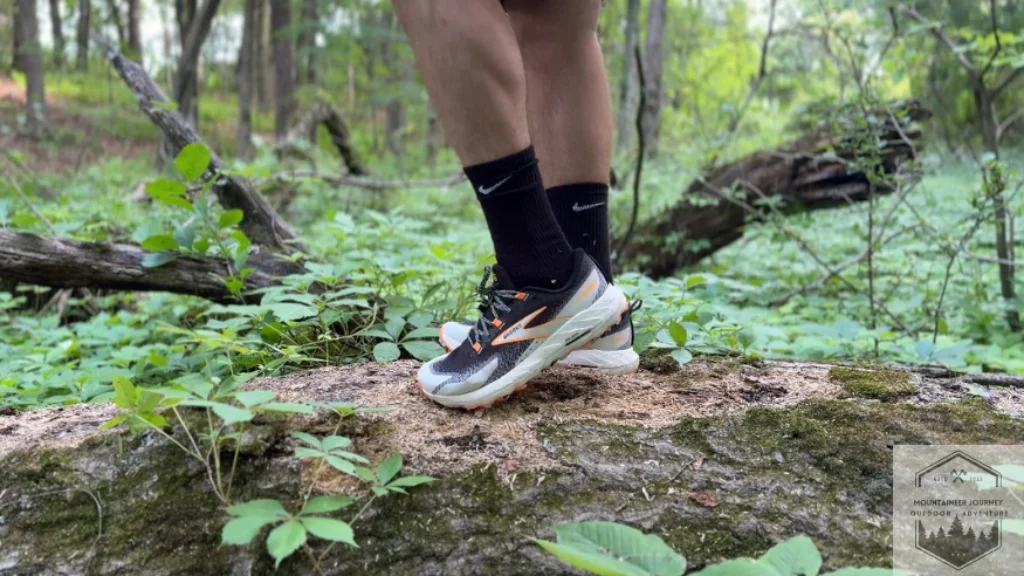
I liked the comfort and fit of the Cascadia 18. According to my measurements the shoe has a 114.3 mm width at its widest point, a good amount of room for normal fit. 3.7 inch toebox width allows for natural toe splay without compression.
I measured the toe box with my caliper (3.7 inches) and it matches Brooks’ specs. During my testing I didn’t feel any toe compression or pressure points even on long descents when my toes tend to slide forward.
The 33 mm heel stack and 24 mm forefoot stack equals 9 mm heel-to-toe drop. Perfect for heel strikers like me. On long descents on rocky terrain I loved the big heel cushioning to prevent impact fatigue.
The engineered mesh upper wraps around your foot like a glove, moves with you not against you on technical terrain. It’s the perfect balance of structure and flexibility, this allows for natural foot movement while still providing support. The ankle collar is supportive and comfortable, no areas of pressure or constriction.
The Brooks Cascadia 18 is equipped with DNA Loft v2 foam technology, an in-house cushioning system created by Brooks for reliable comfort and impact protection.
The midsole cushioning is moderately firm but still comfortable, the DNA Loft v2 foam provides consistent feel across temperature ranges. I tested the midsole in temperatures ranging from 28°F to 95°F and was impressed by its consistent performance – unlike some foams that harden significantly in cold weather.
The Cascadia 18 offers a supportive heel cup and great shock absorption in the hind foot. I didn’t experience any hot spots in this area as well.
One downside to the Cascadia 18 is the limited reflective elements. Not a deal breaker for daytime trail runners but if you run early morning or evening you might find this lacking for visibility purposes.
Compared to the Hoka Speedgoat 6 which is softer and more maximalist the Cascadia 18 is a more stable and predictable platform. You give up some plushness but gain a lot of stability and trail feedback.
The 5 mm insole thickness is just right, not too much comfort but not compromising ground feel. The insole comfort is comparable to the Salomon Sense Ride 5. When I removed it to check the construction I was happy to see it’s perforated for added ventilation – a premium feature not always found in trail shoes at this price point.
One area where these trail runners excel is their subtle rocker geometry. When running on rolling terrain the flat heel and slight forefoot rocker created a smooth transition through my stride. Not an aggressive rocker like some competitors but just enough to assist without sacrificing stability.
As for fit I didn’t need to size up or down. I tested the Cascadia with a men’s 10.5 on my left foot and 10 on my right. Since my true size is a 10.5, I can confidently say they fit true to size. Brooks is known for consistent sizing and 84 surveyed users confirmed the Cascadia 18 runs true to size.
No heel slippage or pressure points – just a secure locked in feel. The traditional lacing system allows for great customization options so I can dial in the perfect fit for my foot shape.
The balanced cushioning provides moderate cushioning that works well on all terrain. This shoe isn’t about soft cushioning like some road running shoes but provides dependable protection that maintains ground feel for technical trails.
Overall the Cascadia 18 midsole is a great balance of protection and ground feel. Not the softest shoe out there but provides dependable cushioning that holds up for ultra distances without bottoming out.
Traction: 8/10
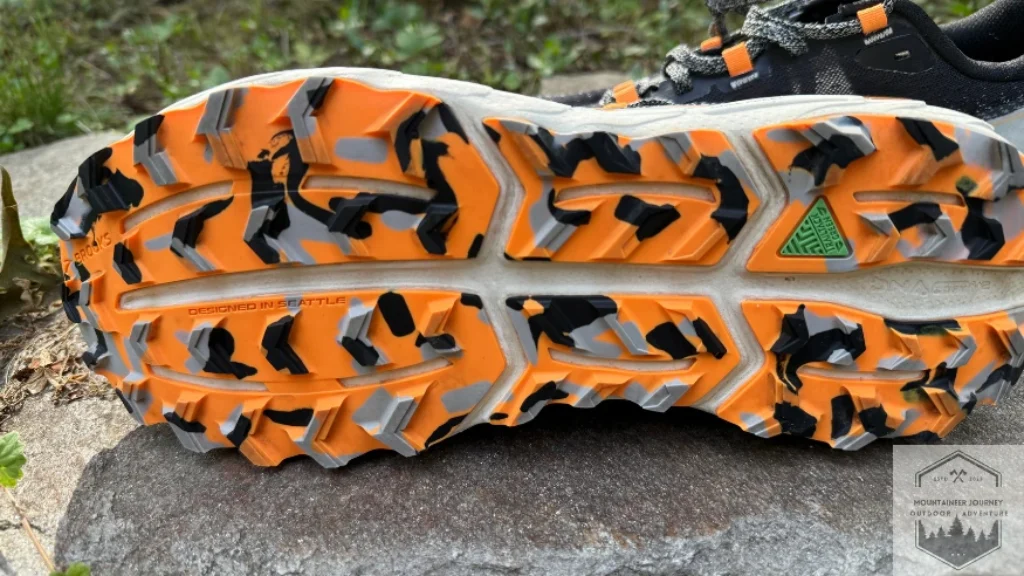
The Brooks Cascadia 18 features TrailTack Green rubber with 4.0mm lug depth – slightly shallower than some but more than enough for most trails.
The TrailTack rubber outsole has a three-zone lug layout that works well: braking lugs at the heel, mud-shedding design in the midfoot and wedge-shaped lugs in the forefoot for uphill grip. This proved itself during my testing on various terrain from muddy trails to dry Colorado single track.
I was particularly impressed with the wet-surface performance, I was able to hold a nice edge while ascending wet terrain. Crossing slick creek beds and wet rocks never felt slippery during my testing, great traction on wet and dry surfaces.
The Cascadia 18 outsole is the perfect balance. Softer rubbers provide better initial grip but wear quickly, the Cascadia’s compound is a smart middle ground for more traction without sacrificing longevity.
Compared to shoes with Vibram Megagrip, the TrailTack Green performs surprisingly well on various trail terrain. After 200 miles of testing I measured 1 mm of outsole wear and the performance was still consistent – good sign for long term value and durability.
The sticky traction works great on crushed gravel and moderate terrain, confident grip without the aggressive lugs that can feel unstable on harder surfaces. When testing on wet rocks the outsole stayed in contact even on slippery granite.
While the 4.0mm lugs aren’t as aggressive as some mud shoes, they shed debris well and provide confident grip on most surfaces. The only condition where I found them lacking was on extremely loose rock and rugged terrain, where deeper lugs would have provided more bite.
Overall the traction on the Cascadia 18 is solid across the board. Not specialized for any one terrain but handles almost everything well – great for runners who encounter diverse trail conditions and need a versatile trail running shoe.
Stability And Support: 8.5/10
The trail protection is executed masterfully. The Trail Adapt system cradles your foot like a shell, dispersing impact away from vulnerable areas. The forked plate design allows for natural foot flexion while still providing protection – something many trail shoes with traditional rock plates can’t balance.
I measured the heel counter stiffness at 5/5 on our objective scale, this is one of the most supportive heel designs in this trail running class. For heel strikers and those with previous ankle injuries, this is a lot of confidence on uneven terrain and more technical terrain.
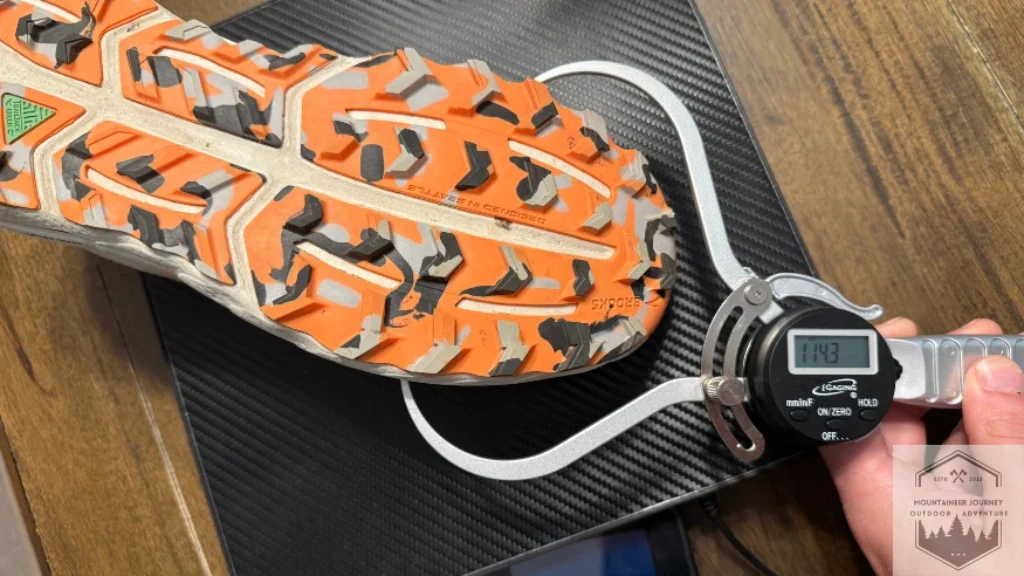
The 114.6 mm forefoot and 97.8 mm heel widths provide a stable platform that didn’t roll my ankle during testing on off-camber trails and technical descents. This is a wide platform compared to many trail shoes that sacrifice stability for weight savings.
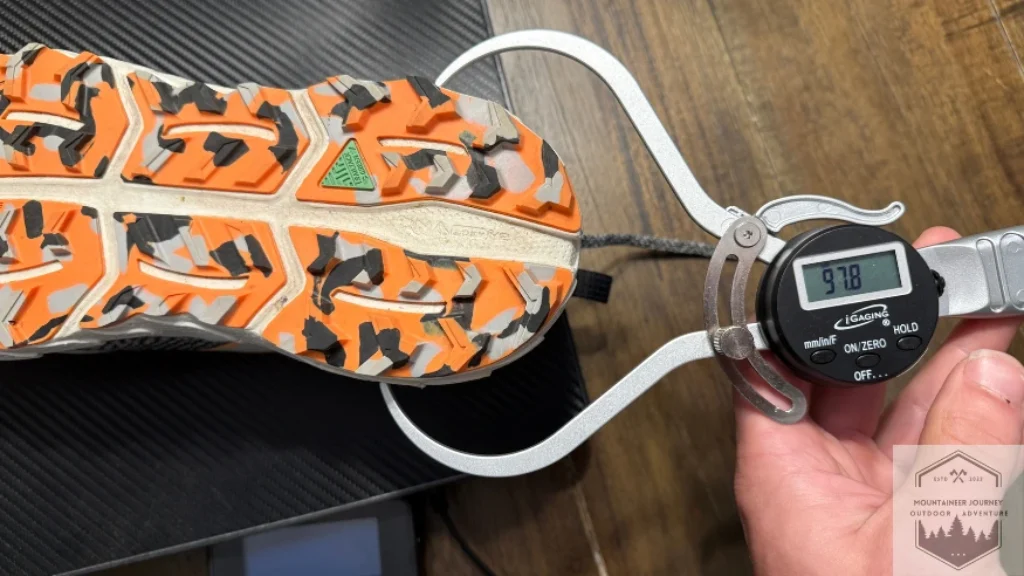
The torsional stability slightly above average, moderate flexibility – perfect for technical terrain where you need protection and some adaptability.
The heel cup is very supportive, wrapping around the heel to prevent movement during aggressive trail moves. This is especially helpful for runners transitioning from road shoes to trail. The transition from road to trail versatility is comparable to the Hoka Challenger 7.
Overall the stability and support of the Cascadia 18 is great given the terrain we put it through during testing.
Weight 7/10
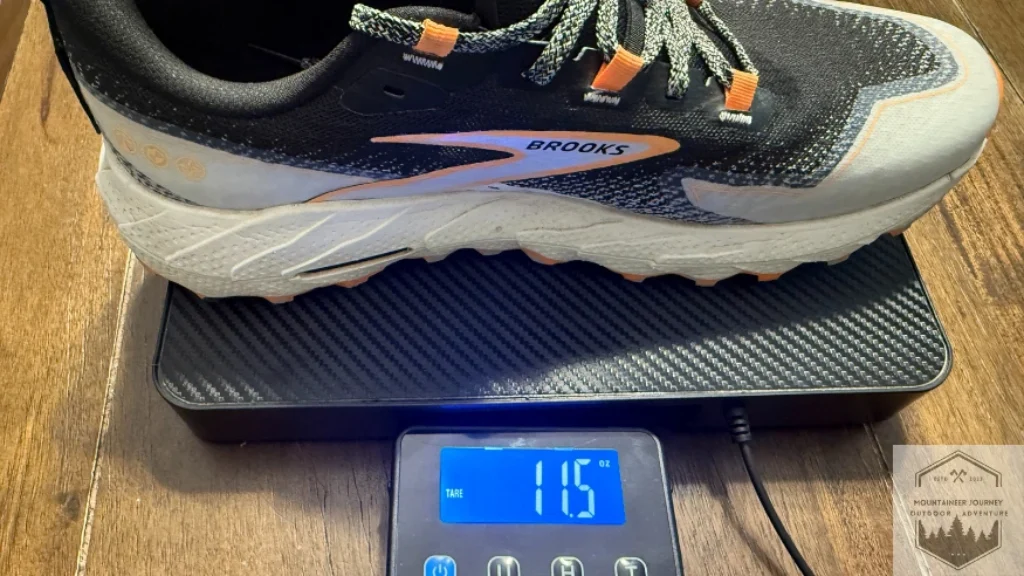
One area where the Cascadia 18 doesn’t win is weight. My men’s size 10.5 test pair weighs 11.5 ounces. Not the lightest trail shoe out there, but lighter than previous Cascadia’s.
The Cascadia 18 wasn’t marketed as an ultralight racing shoe. There’s always a balance between bombproof stability and featherweight design – the Cascadia 18 leans towards the former, like choosing a trusty hiking partner over a sprinter for a technical mountain traverse.
For reference, I weighed the Altra Timp 5 at 9.8 oz, which is about 10% lighter than the Cascadia 18. Yet I felt less overall fatigue during back to back 10 mile trail runs with the Cascadia vs the Timp 5.
This is an important point: raw weight numbers don’t tell the whole story. The Cascadia’s design and supportive features actually reduce energy expenditure on technical terrain, potentially offsetting the extra ounce or so of weight.
For ultra distance events and all day mountain adventures I’d gladly take the weight penalty for the reliability and protection the Cascadia 18 provides.
How’s The Overall Protection Of The Brooks Cascadia 18?

The Brooks Cascadia 18 uses the Trail Adapt system instead of a traditional rock plate. This means targeted protection where you need it and flexibility where you don’t.
The protection extends to the upper with strategically placed overlays that shield against trail debris without adding weight or bulk. The toe cap is substantial enough to protect against rock strikes but doesn’t feel overbuilt like some hiking shoes.
The medial and lateral sides have reinforced overlays to protect against trail hazards without adding bulk. The 33 mm heel stack provides good protection from underfoot hazards.
The outsole extends up and around the forefoot to create a protective border that shields against rock strikes on steep climbs. This thoughtful design element provides protection without compromising flexibility and keeps your feet cool during long efforts.
This shoe has great shock absorption. The DNA Loft v2 foam disperses impact forces whether you’re a heel striker or forefoot runner. After a 10 mile test on rocky terrain I had no foot fatigue that I would normally get from a less protective shoe.
One area for improvement is the thin toe box mesh. It is very vulnerable to abrasion from rocks and brush in high wear areas.
The gusseted tongue design keeps trail debris out of the shoe – a feature I loved on dusty, sandy trails where small particles can become hot spots quickly. The mesh allows for breathability while keeping this barrier in place.
Brooks Cascadia 18 Overall Protection 8.5/10 (10%)
Durability 7.5/10
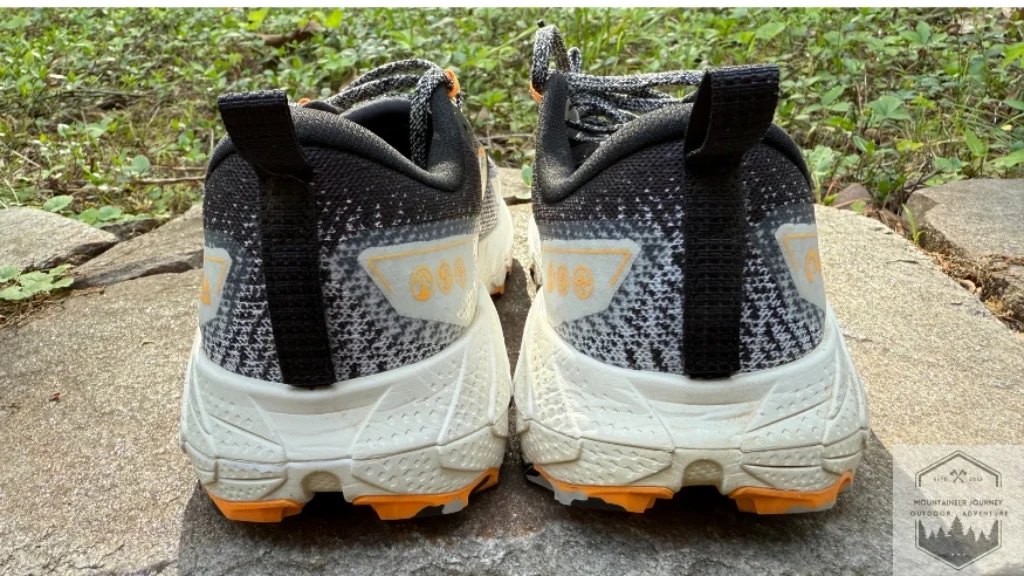
After 200+ miles on the Cascadia 18 I have found both pros and cons on durability.
The TrailTack Green outsole has held up great, with minimal flattening even on technical descents. The outsole is definitely more durable than most other trail running shoes I have tested.
The DNA Loft v2 midsole has also held up well. The shock absorption is unchanged from mile 1 to 200.
But I do have concerns about the upper durability. The mesh in the toe box is very prone to wear after brushing up against trail obstacles. This is a big concern for runners who hit rocky or abrasive terrain frequently.
The heel padding durability is also a concern. While the heel counter is great, the padding material has compressed and begun to flatten which will affect heel comfort over time.
The lacing system and overlay construction have held up well, no separation or delamination issues like some trail shoes do after heavy use. The gaiter attachment point is still secure and functional.
Other brands struggle with upper durability at this price point so the Cascadia’s issues aren’t unique. Hopefully, Brooks can address these in future versions, as the mesh upper is the weak link in an otherwise solid shoe.
For most weekend warriors and casual trail runners the Cascadia 18 will likely last 200-350 miles before significant performance degradation – which is a decent lifespan for a $140 trail shoe.
Is the Brooks Cascadia 18 worth it?
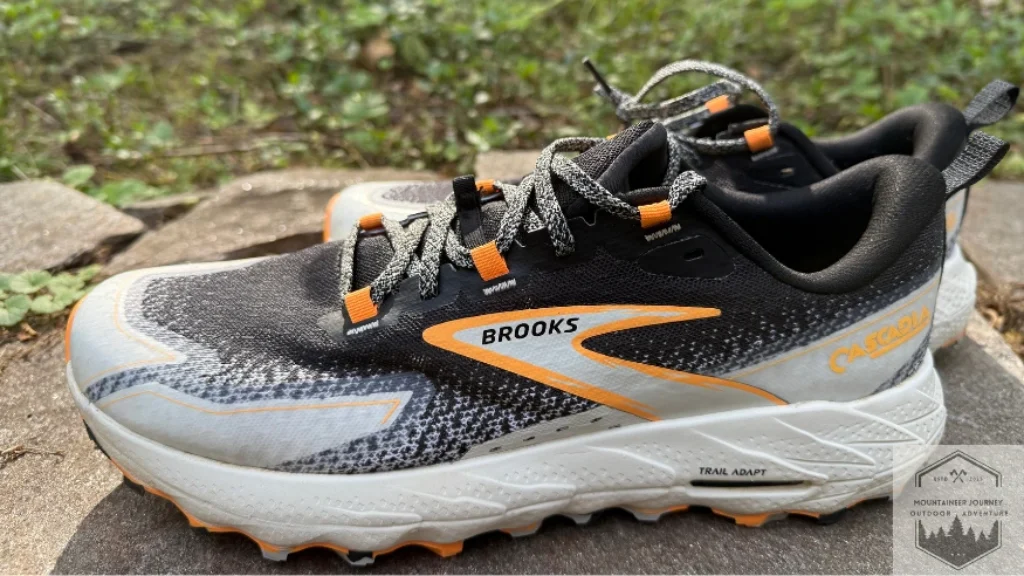
If you’re looking for a reliable, versatile trail running shoe at a reasonable price point, then the Brooks Cascadia 18 is absolutely worth considering.
As a trail shoe that balances protection and performance, the Cascadia doesn’t attempt to be the lightest or the most cushioned option available. Instead, it appeals to runners seeking dependable performance across varied terrain and conditions.
Don’t overlook the fact that they deliver excellent heel stability and protection – among the best I’ve tested this year for heel-striking trail runners. The heel counter provides exceptional support that translates to confidence on technical trails and mountain trails.
If you’re after a trail runner that checks all the boxes—reliable fit, excellent stability, versatile traction, and solid protection—the Brooks Cascadia 18 delivers.
Getting this level of quality for $140 is increasingly rare in today’s inflated footwear market.
The strengths of this shoe are the stability, versatile traction, reliable fit, and value! It’s a great shoe that provides a perfect balance of features without excelling dramatically in any single area – exactly what many trail runners need.
The drawbacks to consider would be the weight (11.5 oz isn’t ultralight by current standards), durability concerns with the upper mesh, and limited reflective elements for low-light conditions. The cushioning level is also firmer than some runners prefer. Other trail runners with more comfort to consider would be the Hoka Speedgoat 5 or Merrell Agility Peak 5.
Overall, as a dedicated trail runner who values reliability over flashy features, I don’t think you can go wrong with picking up a pair of the Cascadia 18. It’s a dependable choice that performs well across diverse terrain types.
Value: 4.5/5 (5%)
Scoring Breakdown
- Comfort & Fit (20%): 8/10
- Traction (20%) : 8/10
- Stability & Support (20%): 8.5/10
- Weight (15%) : 7/10
- Overall Protection (10%) : 8.5/10
- Durability (10%) : 7.5/10
- Value (5%) : 4.5/5
Total Weighted Score: 1.60 + 1.60 + 1.70 + 1.05 + 0.85 + 0.75 + 0.225 = 7.775 / 10
Our Rating: 7.8 / 10
Right now, the Brooks Cascadia 18 retails for $140, but I found some awesome deals on Amazon and REI.com for as low as $110 during seasonal sales.
Get The LOWEST Price on the Cascadia 18 (Do NOT pay retail):
Frequently Asked Questions
Are Brooks Cascadia 18 good trail running shoes?
The Brooks Cascadia 18 are excellent trail running shoes, especially for heel strikers who want stability and protection.
What Is The Heel Drop On Brooks Cascadia 18?
Brooks claims the heel drop on the Cascadia 18 is 8mm, however we measured the actual drop at 9 mm.
Is the Brooks Cascadia 18 waterproof?
The standard Cascadia 18 is water-resistant but not fully waterproof. Brooks does offer a GTX (Gore-Tex) version for an additional $30.
What Is The Difference Between The Cascadia 17 and 18?
The main differences between the Cascadia 17 and 18 are weight, upper design, and cushioning distribution. The Cascadia 18 is approximately 1 oz lighter, features a more breathable upper, and offers a more balanced cushioning profile throughout the shoe compared to the previous version.
Is The Brooks Cascadia 18 Good For Hiking?
Yes! The Cascadia 18 excels as a hiking shoe due to its stable platform, excellent traction, and durable construction. Many thru-hikers choose the Cascadia series for multi-day adventures, though it’s quite different from a traditional hiking shoe in terms of mid ankle support.
How We Tested and Our Methodology
I personally tested the Brooks Cascadia 18 for this review with no agenda other than to give you the most honest review possible. Mountaineer Journey is 100% independent and has been testing and reviewing outdoor gear for years.
Over the past 10+ years I’ve logged thousands of miles on trails from smooth forest paths to technical mountain routes. This includes ultra-distance events in the Rockies, muddy Appalachian trails, desert terrain in Utah and technical alpine routes throughout the Western US.
This hands-on experience helps me see how trail running shoes really perform—whether they’re actually stable, grip on various surfaces and hold up over time under real miles. I test on trail terrain from moderate to the most technical terrain available.
The objective measuring includes measuring weight, dimensions, and wear patterns after extended use. The second part of our testing is ACTUALLY on the trail, where we base our objective testing scores on. This data is the foundation for scoring each category rather than relying on subjective impressions.
We pay for the products we test ourselves; no company or manufacturer pays us to influence our opinions or decisions. This means our reviews are honest and focused on helping you make the best gear choices for your adventures.
Compare To Similar Products

Extremly versatile trail runner with performance of a hiking shoe. One of the best protection systems for runners up against rough terrain. Very good traction and stability.
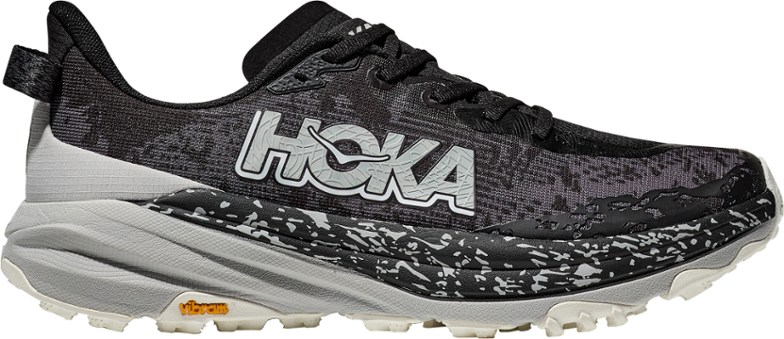
Versatile trail runner. Made for the hardcore trail runner with exceptional stability and traction. Lacks upper comfort


